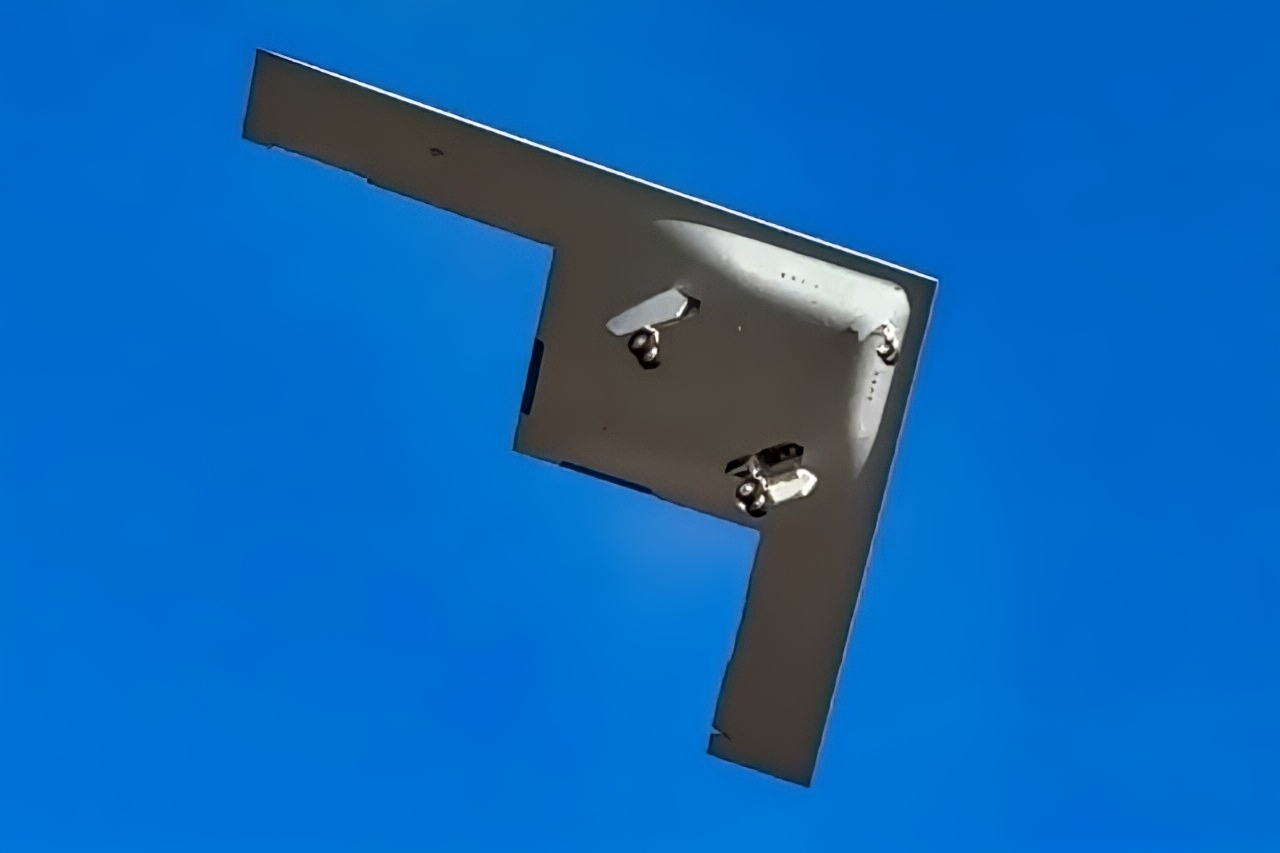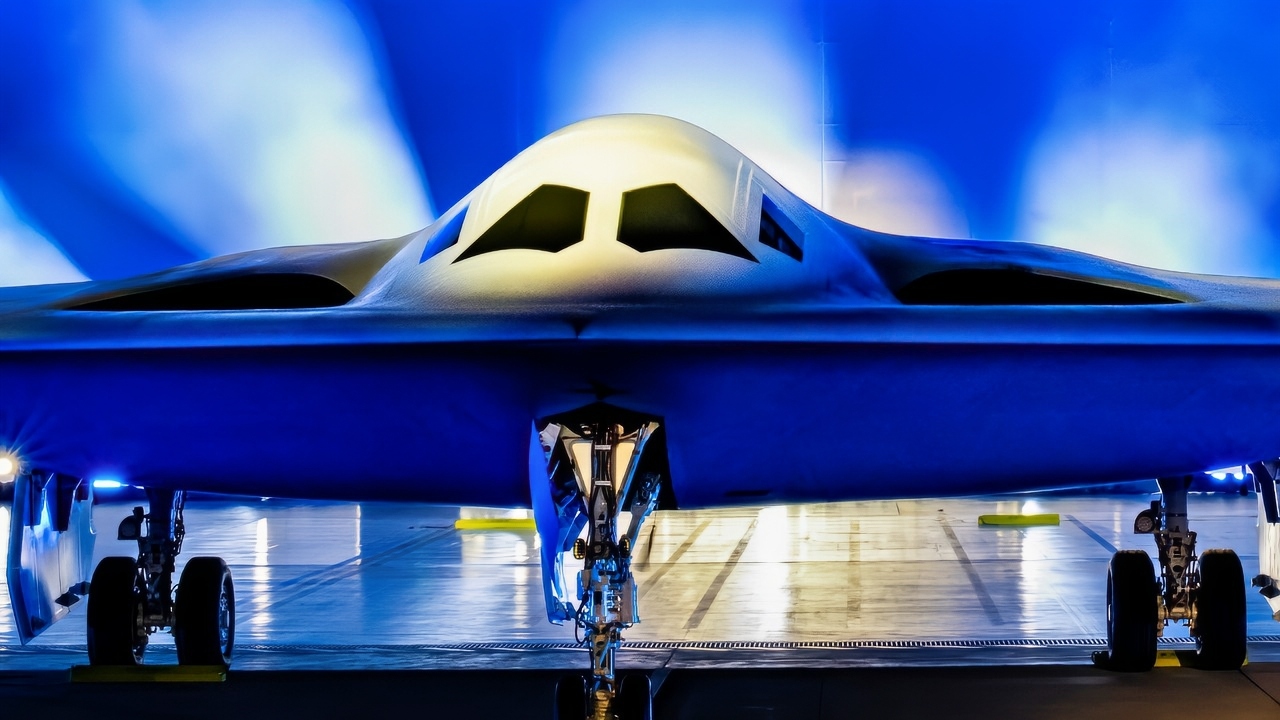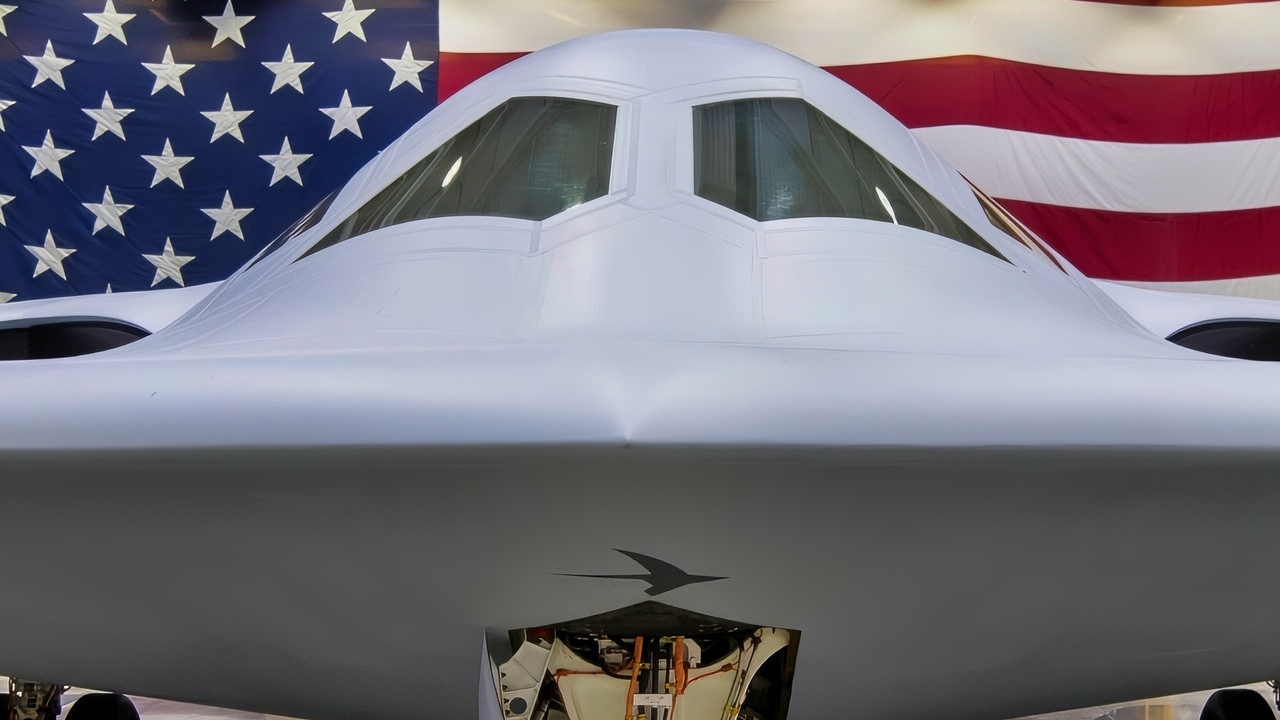Key Points and Summary – Stealth bombers like the B-21 Raider still work—but the game is changing.
-Quantum radar remains lab-bound, hampered by range and real-world noise, while AI-driven sensor fusion is arriving faster, stitching radar, IR, acoustic, and passive cues into earlier, steadier tracks.

B-21 Raider New Flight of Second Bomber. Image X Screenshot from Video Posted.
-That doesn’t make the B-21 obsolete.
-Detection is only step one in a long kill chain; low observability still degrades tracking, handoff, and weapon solutions. The Raider’s edge is holistic: stealth plus electronic warfare, networking, long-range weapons, and rapid upgrades.
-Expect tactics to evolve—distributed ops, stand-in/stand-off teaming, and deception—but the B-21’s mix of low signature and effects means it stays relevant even as sensors get smarter.
Can the B-21 Raider Survive in the Age of Quantum Sensors?
Stealth was decisive when the F-117 Nighthawk first flew over Baghdad, and it has since become one of the most important—and impressive—features of modern military aviation.
Now, as Northrop Grumman’s B-21 Raider advances through testing, with a second aircraft flying earlier this month, the technology’s dominance is facing serious challenges.
Between quantum sensors and AI-driven technology, detection could soon minimize the security that stealth once provided to the world’s most advanced aircraft.
But not everyone believes it’s over for stealth just yet.
Stealth Works, For Now
Stealth technology has only gotten better since it first emerged in the mid-1970s, and it just keeps getting better.
While it’s hard to know exactly how big each of America’s stealth bombers’ radar cross sections (RCS) really are, military officials and analysts have long suggested that the F-117 Nighthawk’s cross section was comparable in size to a hummingbird or golf ball. In practical terms, however, that radar cross section does not simply mean that adversaries see a hummingbird-sized object hurtling through the skies at almost Mach 1 speeds.
A radar cross section is a measure, in square meters, of how much energy an object reflects to a radar antenna. When the F-117’s RCS is described as being hummingbird-sized, it means that the amount of radar reflection looks roughly the same as if a hummingbird were being detected. On a radar screen, technically, the return from a jet would be similar in strength to that of a small bird. However, radar is also designed to filter out clutter.

A B-21 Raider is unveiled at Northrop Grumman’s manufacturing facility on Air Force Plant 42 in Palmdale, California, Dec. 2, 2022. The B-21 will be a long-range, highly survivable, penetrating strike stealth bomber capable of delivering both conventional and nuclear munitions. (U.S. Air Force photo by Airman 1st Class Joshua M. Carroll)
Most modern radars automatically discard or ignore returns from objects such as birds, insects, rain, or objects displaced by the wind. Radar systems do this by filtering out targets with very low RCS or targets with speeds or patterns that look like clutter. And, even if the aircraft were detected, distinguishing it as a “small but fast” target would require radar processing and analysis by operators.
For many of America’s adversaries, this is not possible because older and less sophisticated systems suppress low-level returns completely. For more competent adversaries, it is technically feasible – though difficult – to track small objects. However, operators of even the most advanced radar equipment are still hindered by the fact that modern stealth aircraft are designed not only to have a small RCS, but to shape the reflection of radar inconsistently, breaking up at different frequencies or bounding energy away from the radar entirely.
However, the emergence of new technologies, such as quantum radar, AI-driven sensor fusion, and multi-static detection, means that the days of stealth may soon be over – or that more dramatic advancements in stealth technology than those seen on the upcoming B-21 Raider may be required to maintain America’s stealth deep-strike capability.
B-21 Raider Undone Thanks to 2 Words: Quantum Radar?
Among the emerging technologies that could render existing stealth technology obsolete is quantum radar – a form of remote-sensing system that exploits quantum-mechanical effects such as entanglement, quantum illumination, or squeezed states, to detect low-observable targets, suppress background noise, and resist jamming better than classical radar.
In simple terms, quantum radar tries to use the quirks of quantum physics to spot objects that today’s radar systems cannot see. In effect, the technology – which is still only a proposed technology – gives operators a way to pick out a stealth aircraft or drone from the background noise where a normal radar would come up blank.
The idea has been around for well over a decade in theoretical and lab settings – but at present, it is not in operational field use. Not only that, but the technology still has several major hurdles to overcome before it’s ready for deployment, including range issues, the stability of quantum states, and the general difficulty of deploying such sensitive technology in realistic, noisy environments.

The B-21 Raider was unveiled to the public at a ceremony December 2, 2022 in
Palmdale, Calif. Designed to operate in tomorrow’s high-end threat environment, the B-21 will play a critical role in ensuring America’s enduring airpower capability. (U.S. Air Force photo)
Some states – China being among them – are reportedly considering or researching the tech’s deployment for strategic early warning platforms, including high-altitude or near-space sensors. Writing for PostQuantum in 2023, Marin Ivezic described how he has poured “significant resources” into quantum radar research – but he also poured cold water on the idea that the tech was anywhere near ready for deployment.
Addressing China’s claims to be leading in the field, he added that while China may have a “head start” with the technology, most Western scientists recognize that scaling the technology beyond 100km outside of test conditions would prove “extremely challenging” with today’s technology.
AI-backed sensor fusion, however, could arrive much sooner. The technology utilizes artificial intelligence and machine learning technology to combine data taken from multiple sensors – including radar, IR, acoustic, and more – in real time.
The technology utilizes numerous markers to enhance detection and tracking, while also minimizing latency in decision-making. These systems are already being deployed on aircraft, unmanned systems, and ships, and are already used by land forces. Data is processed locally rather than being sent back to centralized hubs, thanks to improved onboard computer hardware.
Speaking at a webinar hosted in June 2025, DARPA’s Rob McHenry described how sensor fusion and AI could spell the end of the stealth era entirely.
“I don’t think we’re going to be able to hide, in an operational sense, in a realistic way…due to the sophistication of sensor fusion and track, using AI and other techniques,” McHenry said.
Just how long it will take for this technology to be useful, however, is still up in the air. Quantum technology is plagued with troubles, but artificial intelligence – when fed sufficient data – could upend stealth entirely and at a moment’s notice.
What Does the Future Look Like?
So what, then, does the future of stealth aircraft look like? And is the B-21 Raider – the successor to the iconic B-2 Spirit stealth bomber – dead on arrival?
Well, words from the same conference attended by Rob McHenry in June give us an idea of what to expect. Retired Lt. Gen. David Deptula, the dean of AFA’s Mitchell Institute for Aerospace Studies, described how stealth aircraft will continue to exist even after new technologies emerge. Why? Because those aircraft come with other mission assets – like electronic warfare, cyber, space effects, and kinetics – that make the aircraft effective.
“Add that up and factor in the dynamic variables of combat, and it’s quite formidable,” Deptula said.
“Detection is but one element of a series of actions that must be taken to defend against stealth. After detection, the low-observable target must be tracked, the track must be transferred to an interceptor, then to a weapon, then to a fuse, and the use must be properly designed for the target,” he continued. “Each one of these elements in the kill chain is complicated by stealth, which decreases the probability of intercept.”
For now, then, stealth remains intact – and while the upcoming B-21 Raider may prove vulnerable to emerging anti-stealth technologies, its host of additional advanced technologies could ensure it remains the formidable strategic stealth bomber it was designed to be, for as long as the U.S. Air Force hopes it will be.
About the Author:
Jack Buckby is a British author, counter-extremism researcher, and journalist based in New York who writes frequently for National Security Journal. Reporting on the U.K., Europe, and the U.S., he works to analyze and understand left-wing and right-wing radicalization, and reports on Western governments’ approaches to the pressing issues of today. His books and research papers explore these themes and propose pragmatic solutions to our increasingly polarized society. His latest book is The Truth Teller: RFK Jr. and the Case for a Post-Partisan Presidency.
More Military
SR-72 Mach 6 Mistake the Air Force Needs to End
The U.S. Navy’s Ohio-Class Missile Submarine Nightmare
America Has Mini-Aircraft Carriers
Russia’s Su-57 Felon Stealth Fighter: Made in India?
F-22 Raptor vs. J-20 Stealth Fighter: Hope This Never Happens











Dave Kinghorn
September 18, 2025 at 8:43 am
Quantum Radar is defeated by Quantum countermeasures.